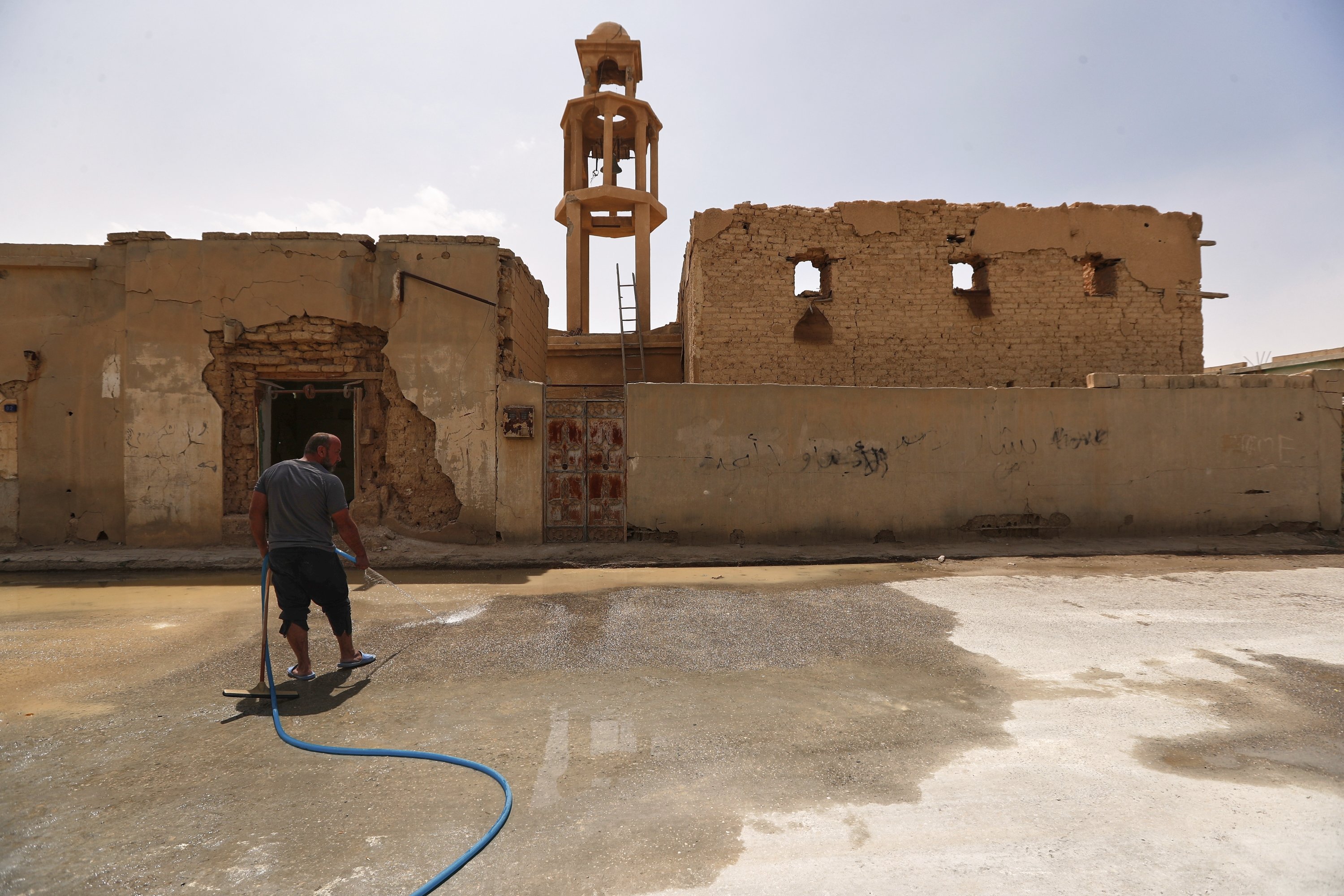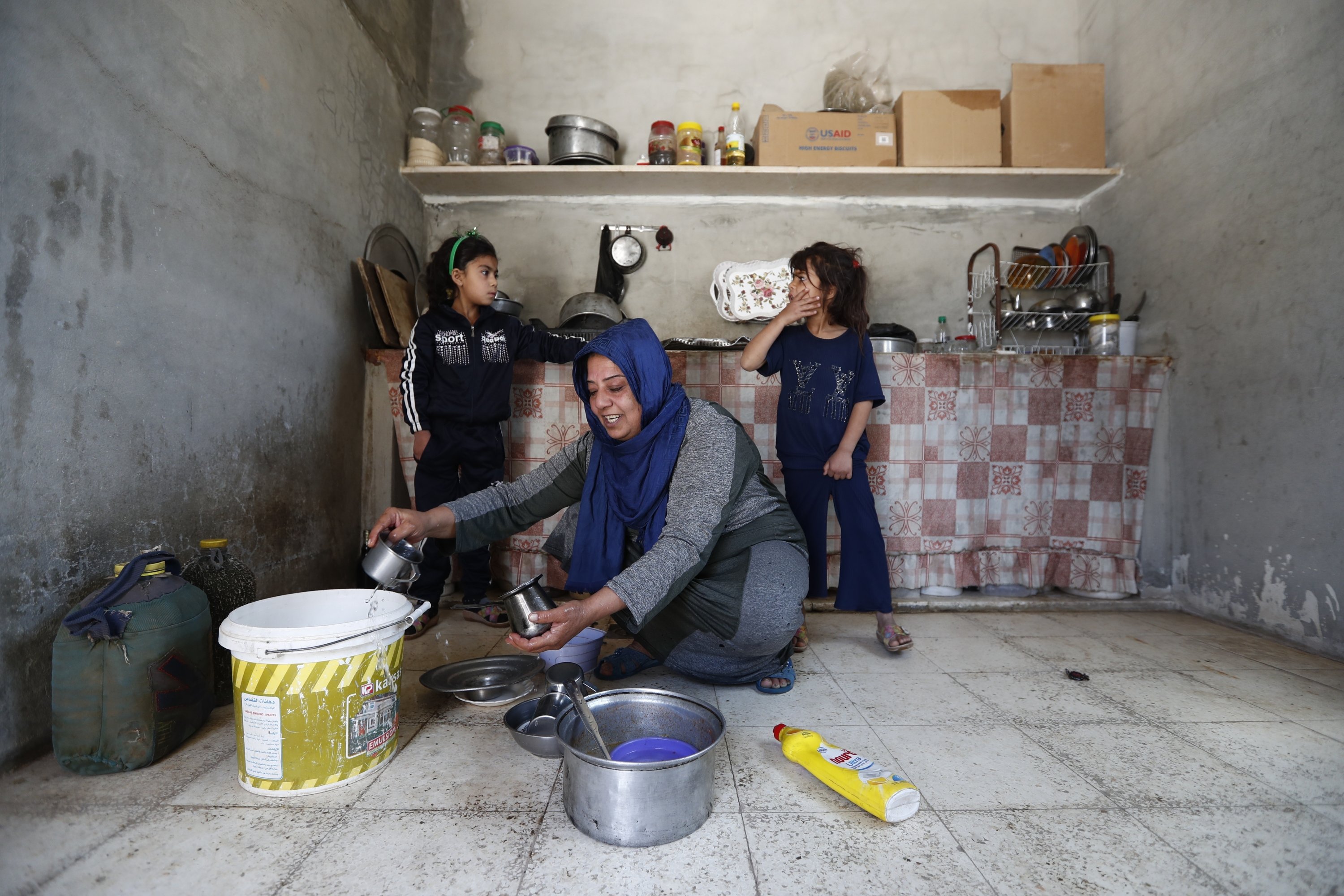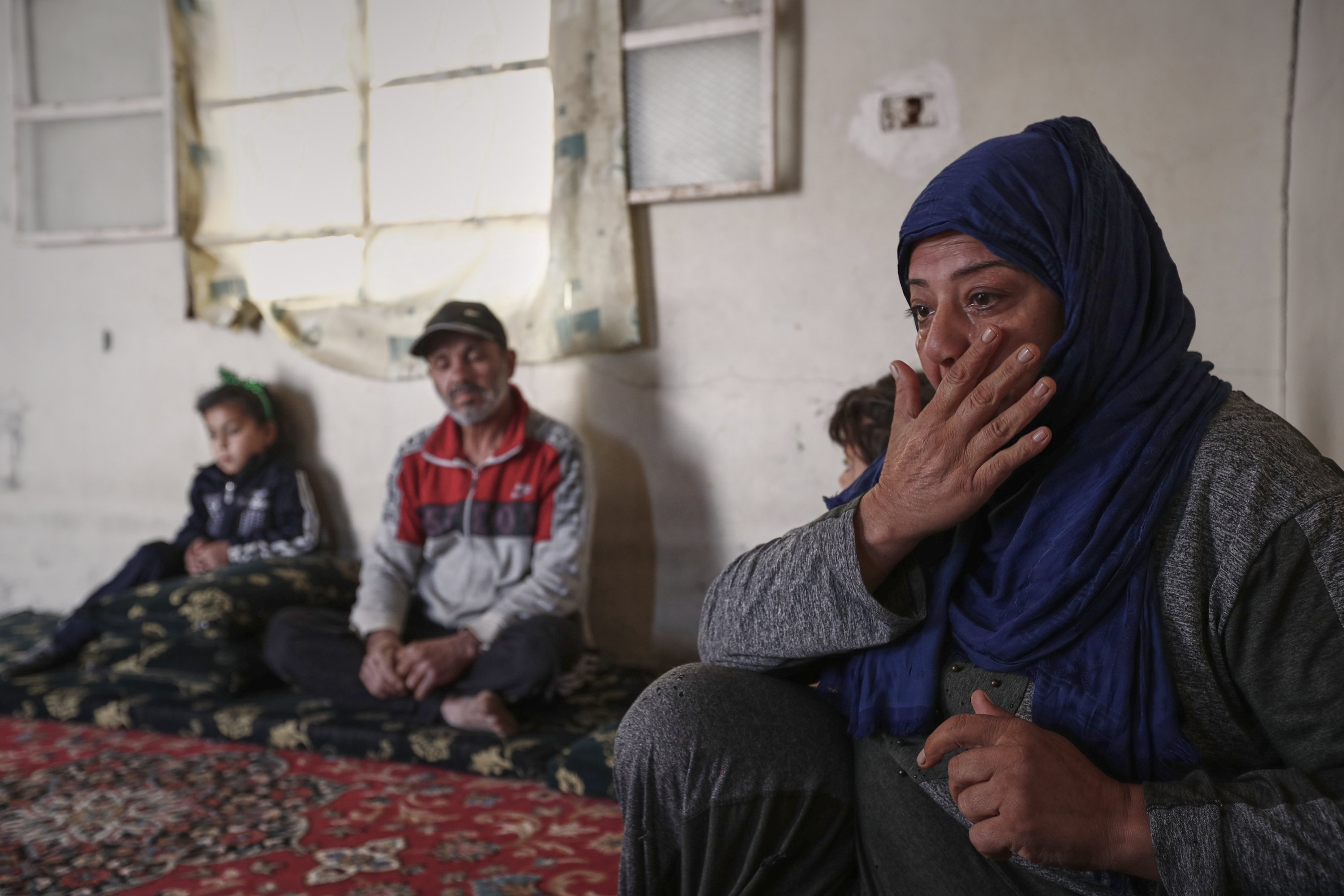© Turkuvaz Haberleşme ve Yayıncılık 2025
Yasmine al-Saleh has two reasons to celebrate this year: the Eid al-Adha holiday and her family’s long-awaited return home after nine years in a notorious displacement camp in the Syrian desert.
Though their hometown of al-Qaryatayn in eastern Homs province bears the scars of nearly 14 years of civil war, with many buildings collapsed and their own house dangerously unstable, al-Saleh’s joy is unmistakable.

“When I first stepped into my house – words can’t describe the happiness,” she said tearfully. “Even though it’s destroyed, we have no money, we’re hungry, in debt, my husband is old and can’t work, and I have children – it’s still a castle to me.”

Last month marked the final evacuation from Rukban, a camp on the Jordan-Iraq-Syria border that once sheltered tens of thousands enduring a crippling siege.

People fled there starting in 2015 to escape Daesh members and airstrikes from the U.S.-led coalition, Russia and Syrian government forces under President Bashar Assad.
While displacement camps spread across Syria during the conflict, conditions in Rukban were especially harsh.
Unlike most camps in opposition-held northwest Syria, Rukban was isolated, surrounded by Assad-controlled territory and sealed off by Jordan, which closed its border and cut regular aid in 2016 after a deadly Daesh attack on its soldiers.
For years, the U.N. and other humanitarian organizations were largely unable to bring aid in. Food, water and other essentials were only available via smuggling at exorbitant prices, and there was almost no access to medical care.
Al-Saleh recalled that when she gave birth to her two daughters, she feared she would die in childbirth as other women in the camp had.
In recent years, some aid arrived via the U.S. Army.
The camp was located in a 55-kilometer (34-mile) “deconfliction zone” surrounding the base. Many of the camp’s residents were families of fighters with the U.S.-backed Syrian Free Army.
“Conditions were horrid,” said Lt. Col. Ryan Harty, who was stationed at the nearby al-Tanf garrison as squadron commander in 2024 and assisted with the aid shipments. “They lacked medical care, medical supplies, food, basic food supplies, water – anything you could think of that you would need to sustain life, they lacked.”
The U.S.-based NGO Syrian Emergency Task Force worked with military officials to implement a provision allowing American aid groups to send humanitarian goods on military cargo planes if the planes were not fully loaded with military supplies.
Eventually, they secured seats on the planes to bring doctors to the camp. Maj. Bo Daniels, chief of the civil affairs team at al-Tanf in 2023, was the first to realize doctors could be classified as “humanitarian aid.”
“I’ve been in the Army now for 24 years. I’m an Afghanistan and Iraq veteran,” Daniels said. He has mixed feelings about those deployments. But in Syria, he said, he felt “every day my missions really, truly mattered.” Working in Rukban, he added, was “probably the proudest thing I’ve ever done in my military career.”
Still, the situation remained dire.
A few months before Assad’s fall, Amnesty International condemned the Syrian government’s tightening siege of the camp, criticized Jordanian authorities for continuing to “unlawfully deport Syrians to Rukban despite the camp’s unlivable conditions” and faulted the U.S. government for making “little visible effort to improve the desperate conditions despite its ability to do so.”
Many former residents were desperate enough to leave the camp and head to government-held territory, risking arrest and forcible conscription into the Syrian army.
Before Assad’s fall, about 8,000 people remained.
After Assad fell, there was an immediate exodus from the camp.
But a few hundred people – including al-Saleh’s family – remained, unable to scrape together the funds to move.
Islamic Relief USA paid for trucks and buses to transport some 564 people and their belongings back home last month.
The Syrian Emergency Task Force said in a statement the repatriation of those families brings “an end to one of the worst humanitarian crises in Syria” and “marks the end of the tragedy of Rukban.”
For some, their return was bittersweet.
Bakir al-Najim, another recent returnee to al-Qaryatayn, said, “After 10 years of displacement, we will celebrate Eid al-Adha back in our hometown.” But he added, “We are poor, we have no jobs, we have no food or drinks to offer our Eid guests.”
Ahmed Shehata, chief executive officer of Islamic Relief USA, said U.N. agencies and other humanitarian organizations that normally provide aid to returning refugees and internally displaced people are scrambling to find funding after the Trump administration’s recent major cuts to U.S. foreign aid.
His organization is in talks with the United Nations High Commissioner for Refugees (UNHCR) about allocating significant funds to provide aid to those returning home.
Al-Saleh said, however difficult her family’s circumstances are now, they pale compared with their time in Rukban.
“Rukban was a death camp,” she said. “All I can say about it is that it was a death camp.”
